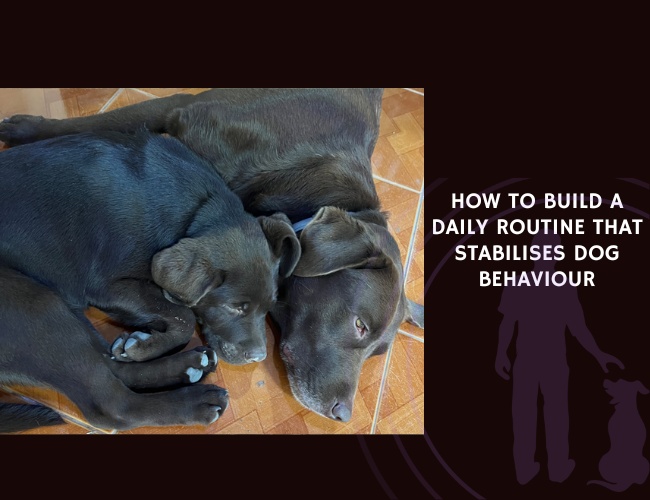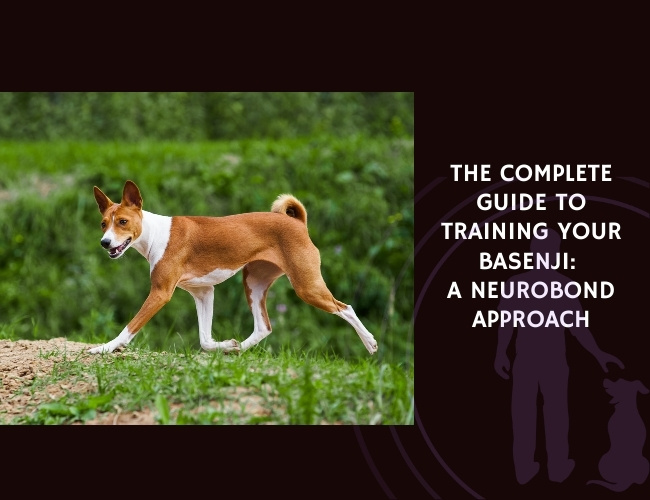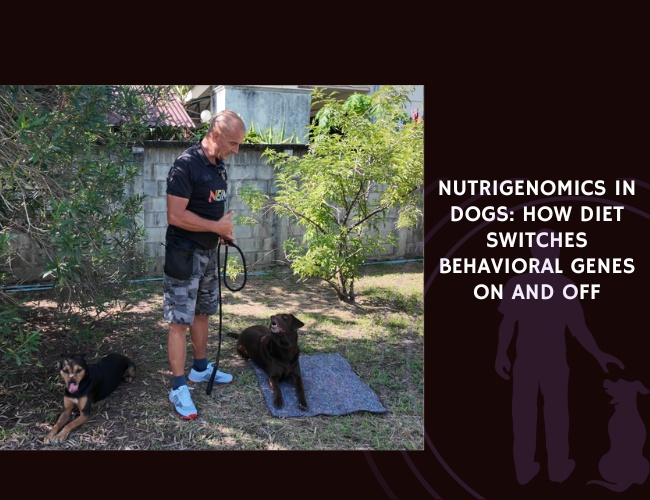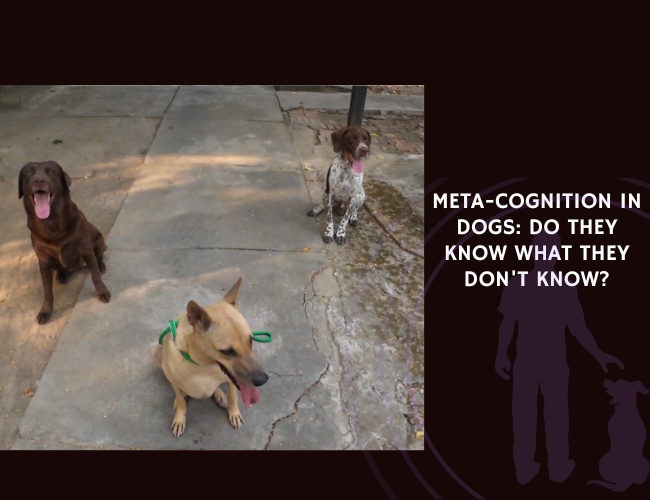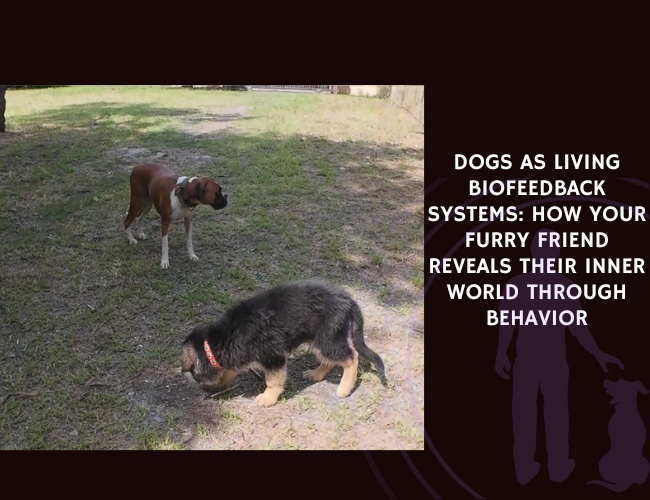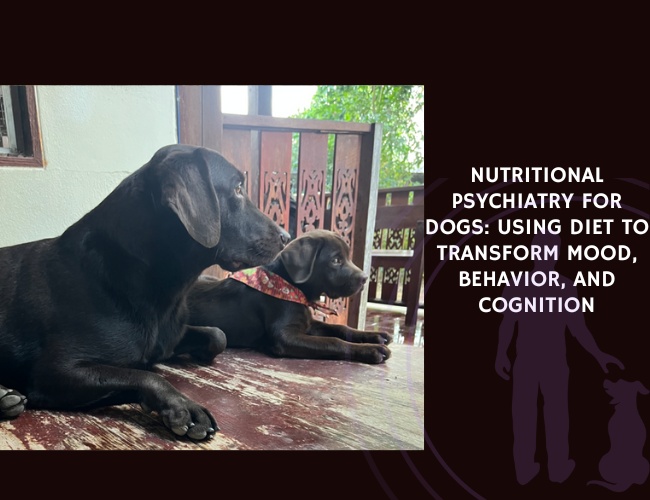Did you know that your dog’s behavioral challenges might stem from something as simple as an inconsistent daily schedule? Just like humans, our canine companions thrive on predictability, and establishing a well-structured routine can transform an anxious, reactive pup into a calm, confident family member. Let us guide you through the fascinating science of canine routines and show you exactly how to create a daily structure that supports your furry friend’s emotional and behavioral health.
Understanding the Science Behind Routine and Canine Psychology
Why Dogs Crave Predictability
Your dog’s brain is hardwired to seek patterns and predictability in their environment. This isn’t just a preference—it’s a fundamental survival mechanism that dates back to their wolf ancestors. When dogs experience consistent daily routines, their stress hormone (cortisol) levels naturally decrease, while their feel-good chemicals like oxytocin increase during positive interactions with you.
The neurological impact of routine goes deeper than you might imagine. Research shows that dogs experiencing unpredictable schedules show elevated cortisol and glucose levels, along with higher total leukocyte counts—all indicators of an activated immune system responding to stress. This biological stress response doesn’t just make your dog feel anxious; it can actually compromise their physical health over time.
Behavioral manifestations of routine disruption are often what pet parents notice first. You might observe increased vocalization, hiding behaviors, destructive tendencies, or changes in social interaction patterns. These aren’t signs of a “bad dog”—they’re your companion’s way of communicating that their world feels unpredictable and unsafe.
The beautiful thing about understanding this science is realizing how much power you have to create positive change. By implementing consistent routines, you’re literally rewiring your dog’s stress response system, building resilience that extends far beyond daily activities. 🧠
The Attachment-Security Connection
The bond between you and your dog plays a crucial role in how effectively routines stabilize behavior. Dogs with secure attachment to their owners demonstrate remarkable differences in their stress resilience and behavioral regulation. This isn’t just about love—though that’s certainly part of it—it’s about creating a relationship where your dog trusts that their needs will be consistently met.
Synchronized stress patterns between dogs and their humans reveal just how deeply our emotional states influence each other. Long-term studies have discovered that dogs and their owners can actually synchronize their cortisol levels over time. This means your calm, predictable energy during routine activities directly influences your dog’s emotional state.
Sleep quality and attachment showcase another fascinating dimension of this connection. Dogs with stronger attachment bonds to their owners spend more time in restorative NREM sleep and show lower alpha wave activity during rest. This improved sleep quality, especially in novel or potentially stressful environments, demonstrates how your presence and predictable care create a portable sense of security for your dog.
When you combine secure attachment with consistent routines, you create what behavioral scientists call a “safe base effect”—your dog develops confidence to explore and engage with the world because they know they have a reliable, predictable home base to return to.
Core Components of a Behavior-Stabilizing Routine
Feeding Schedules: The Foundation of Predictability
Establishing consistent meal times does far more than regulate your dog’s digestive system—it creates anchor points throughout their day that signal safety and care. While the optimal feeding frequency varies by age and individual needs, most adult dogs thrive on twice-daily feeding schedules that align with their natural circadian rhythms.
Hormonal regulation through meal timing affects everything from metabolism to mood. When your dog knows exactly when meals arrive, their body can properly regulate insulin, ghrelin (hunger hormone), and leptin (satiety hormone). This hormonal balance directly impacts behavioral stability, reducing food-related anxiety and resource guarding tendencies.
Creating positive mealtime rituals transforms feeding from a basic necessity into a bonding and training opportunity. Consider implementing these strategies:
- Ask for a simple “sit” or “wait” command before placing the bowl down
- Use puzzle feeders or snuffle mats to add cognitive enrichment
- Maintain the same feeding location to build environmental predictability
- Keep mealtimes calm and distraction-free to support proper digestion
The magic happens when your dog’s internal clock syncs with your feeding schedule. You’ll notice they naturally begin settling down as mealtime approaches, demonstrating the powerful calming effect of predictable routines. This anticipation without anxiety is exactly what we’re aiming for in building behavioral stability.
Exercise and Enrichment: Balancing Energy and Calm
Physical activity and mental stimulation aren’t just about tiring your dog out—they’re about creating predictable outlets for natural behaviors and energy expenditure. The key lies in finding the sweet spot between adequate stimulation and overwhelming your companion.
Breed-specific exercise needs vary dramatically, and understanding your dog’s genetic predispositions helps create appropriate routines:
- High-energy breeds (herding, sporting, working dogs): 60-120 minutes of varied activity daily
- Medium-energy breeds (terriers, toy breeds, scent hounds): 30-60 minutes with mental enrichment focus
- Low-energy breeds (brachycephalic, sighthounds, giant breeds): 20-40 minutes of gentle, appropriate exercise
The cognitive enrichment factor often gets overlooked, but mental stimulation can be just as tiring—and behaviorally beneficial—as physical exercise. Incorporate these brain-engaging activities into your daily routine:
- Morning scent work using hidden treats or toys
- Midday training sessions focusing on new skills
- Evening puzzle toys during your dinner preparation
- Rotating enrichment activities to maintain novelty within structure
Remember, consistency doesn’t mean monotony. You can maintain predictable exercise times while varying the specific activities. Your dog learns to anticipate “adventure time” without anxiety about when it will occur.
Rest-activity rhythm optimization involves more than just exercise—it’s about creating natural energy cycles throughout the day. Dogs, like their wolf ancestors, naturally follow crepuscular patterns (most active at dawn and dusk). Aligning your routine with these natural rhythms enhances the stabilizing effects of your schedule. 🐾
Training Integration: Building Habits That Last
Short, consistent training sessions woven throughout your dog’s day create far more behavioral stability than occasional marathon training sessions. The magic number? Most dogs maintain focus and enthusiasm for 5-10 minute sessions, making them perfect for integration into daily routines.
Reinforcement schedules and habit formation follow predictable psychological principles. When teaching new behaviors, continuous reinforcement (rewarding every correct response) accelerates learning. Once established, shifting to variable reinforcement schedules creates remarkably persistent behaviors resistant to extinction.
Strategic training moments throughout the day might include:
- Morning impulse control exercises before breakfast
- Midday recall practice during potty breaks
- Afternoon leash manners during walks
- Evening settle exercises during family time
The beauty of integrated training is that it doesn’t feel like “work” to your dog—it becomes a natural, expected part of their day that provides mental stimulation and strengthens your bond.
Building emotional regulation through routine training goes beyond obedience. When you consistently practice calming behaviors like “settle” or “place” at the same times daily, you’re teaching your dog to self-regulate their emotional state. This becomes particularly powerful when these trained behaviors coincide with naturally calming times in your dog’s circadian rhythm.
Social Interaction: Structured Bonding for Security
The quality and consistency of social interactions profoundly impact your dog’s behavioral stability. This isn’t just about quantity of time together—it’s about creating predictable, positive social experiences that reinforce secure attachment.
Human interaction patterns should include both active engagement and calm companionship:
- Dedicated one-on-one attention without distractions (phones away!)
- Predictable greeting and departure rituals that minimize anxiety
- Calm, parallel activities like reading while your dog rests nearby
- Interactive play sessions at consistent times
Interdog socialization scheduling requires thoughtful planning, especially for dogs with social challenges. Regular, controlled interactions with known, compatible dogs provide social enrichment without overwhelming your companion. Consider:
- Weekly playdates with familiar dog friends
- Structured pack walks with consistent partners
- Controlled greetings during regular walking routes
- Scheduled quiet time after social interactions for processing
The oxytocin release during positive social interactions creates lasting neurological changes that support emotional resilience. When these interactions occur predictably, your dog develops confidence in social situations rather than anxiety about unexpected encounters.
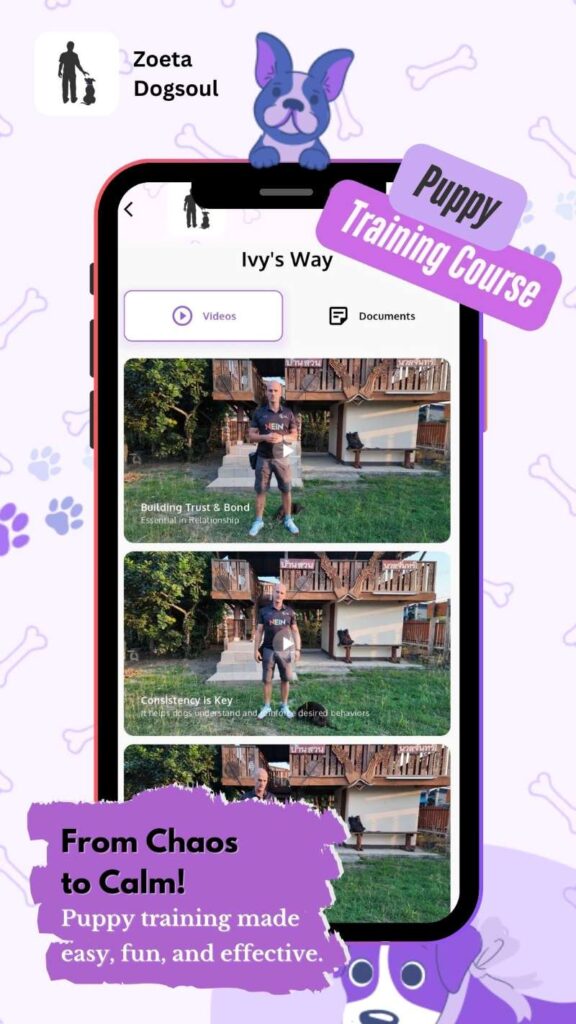
Age and Life Stage Considerations
Puppy Routines: Building Foundation Behaviors
The first 16 weeks of a puppy’s life represent a critical period for establishing routine-based security. Your puppy’s developing brain is particularly plastic during this time, making consistent routines exponentially more impactful for long-term behavioral health.
Frequent, predictable patterns suit puppies’ rapid development needs:
- Potty breaks every 2-3 hours following the same route
- 5-6 small meals transitioning to 3-4 by six months
- Multiple short play and training sessions (3-5 minutes each)
- Enforced nap times in a consistent location
Early impulse control through routine starts with simple concepts. That pre-meal “sit” isn’t just about obedience—it’s teaching your puppy that calm behavior precedes good things. This lesson, reinforced multiple times daily through routine, becomes deeply embedded in their behavioral repertoire.
Creating predictable socialization opportunities within safe parameters helps your puppy develop confidence without overwhelming their developing nervous system. Schedule short, positive exposures to various stimuli at consistent times when your puppy is alert but not overstimulated.
Adult Dog Maintenance: Sustaining Behavioral Balance
Adult dogs (2-6 years) have fully developed brains and established behavior patterns, making routine both easier to maintain and crucial for preventing behavioral regression. This life stage offers the opportunity to fine-tune routines for optimal stability.
Consistency with flexibility becomes key during adult years. While maintaining core routine elements, you can introduce controlled variations that build adaptability:
- Consistent wake and sleep times with varied midday activities
- Regular meal times with occasional enrichment feeding methods
- Predictable exercise duration with rotating locations or activities
- Stable training expectations with gradually increasing challenges
Preventing routine-related anxiety requires balance. Some dogs become so attached to routines that minor disruptions cause distress. Build resilience by occasionally introducing small, controlled changes within the overall structure. This teaches your dog that variations are safe and manageable.
The adult years are when many behavioral issues emerge if routines aren’t properly maintained. Dogs may develop separation anxiety, reactivity, or compulsive behaviors when their need for predictability isn’t met. Conversely, well-maintained routines during these years often prevent age-related behavioral changes later in life.
Senior Adaptations: Comfort Through Consistency
Senior dogs (7+ years) experience physical and cognitive changes that make predictable routines even more critical for behavioral stability. As sensory abilities decline and cognitive function potentially changes, routine becomes your senior dog’s roadmap through their day.
Adjusting for physical limitations while maintaining routine structure:
- Shorter, more frequent walks at the same times
- Modified exercise intensity with maintained duration patterns
- Elevated food bowls in the same location
- Additional potty breaks added predictably to the schedule
Cognitive support through routine becomes increasingly important as dogs age. Canine Cognitive Dysfunction (similar to dementia in humans) affects many senior dogs, and consistent routines can significantly slow progression and reduce associated anxiety. The familiar patterns provide cognitive scaffolding when memory begins to fade.
Comfort rituals take on special significance for senior dogs. That evening cuddle session or morning gentle massage isn’t just pleasant—it’s providing sensory input that helps maintain body awareness and emotional connection. These rituals should remain as consistent as possible, even as other routine elements require modification. 🧡
Implementing Your Routine: A Step-by-Step Approach
Week 1-2: Establishing Baseline Patterns
Starting a new routine requires patience and strategic implementation. Rather than overhauling your dog’s entire day immediately, focus on establishing core anchor points that provide immediate stress relief.
Priority implementation order:
- Consistent wake time and morning potty routine
- Regular meal times with simple pre-meal rituals
- Predictable evening wind-down sequence
- Consistent bedtime with calming activities
Tracking and adjustment during these initial weeks helps identify what works for your unique dog. Keep a simple log noting:
- Your dog’s energy levels at different times
- Behavioral responses to routine elements
- Any resistance or anxiety around specific activities
- Natural patterns your dog already follows
This observation period reveals your dog’s inherent rhythms, allowing you to build routines that work with, rather than against, their natural tendencies. You might discover your dog naturally settles at 2 PM, making this an ideal time for quiet training or rest.
Week 3-4: Building Complexity
Once basic patterns are established, begin layering in additional routine elements. Your dog now has a framework of predictability, making new additions less stressful.
Secondary routine elements to add:
- Structured training sessions at consistent times
- Regular enrichment activities in predictable slots
- Social interaction windows with humans and other dogs
- Specific calm-time or settling periods
Fine-tuning timing becomes important during this phase. You might notice your dog anticipates routines by 10-15 minutes—this is excellent! It shows their internal clock is syncing with your schedule. Adjust timing slightly if anticipation creates anxiety rather than calm readiness.
Watch for signs that your routine is taking hold: decreased overall anxiety, improved sleep quality, better appetite regulation, and increased compliance with training. These indicators suggest your dog’s stress response system is adapting to the predictability you’re providing.
Month 2 and Beyond: Refinement and Flexibility
After a month of consistent routine implementation, you’ll have established a solid behavioral foundation. Now comes the delicate balance of maintaining consistency while building adaptive flexibility.
Introducing controlled variations helps prevent rigid routine dependence:
- Occasionally shift walk times by 15-30 minutes
- Rotate between 2-3 regular walking routes
- Vary enrichment activities within the same time slot
- Practice calm behavior when minor disruptions occur
Seasonal adjustments require thoughtful modification of established routines. As daylight hours change, gradually shift outdoor activity times rather than making sudden changes. Your dog’s circadian rhythm will adapt more easily to gradual transitions.
The goal isn’t perfect rigidity but rather predictable flexibility—your dog learns that while specifics might vary slightly, their needs will always be met consistently. This builds remarkable behavioral resilience that serves them throughout life.
Troubleshooting Common Routine Challenges
Dealing with Schedule Disruptions
Life happens, and even the most dedicated pet parent faces unavoidable routine disruptions. The key lies not in perfect consistency but in how you manage necessary changes.
Preparing for planned disruptions reduces their behavioral impact:
- Gradually adjust routines over several days before major changes
- Maintain whatever routine elements you can during disruptions
- Provide extra enrichment to compensate for missed activities
- Return to normal routines as quickly as possible
Emergency disruption management requires quick thinking and prioritization. If you can’t maintain the full routine, focus on preserving the most critical elements for your individual dog. For most dogs, this includes meal times and at least brief exercise periods.
Remember, dogs are remarkably adaptable when they trust their humans. If you’ve built a strong routine foundation, occasional disruptions won’t undo your progress. Your calm, confident handling of changes teaches your dog that variations are manageable.
Multi-Dog Household Dynamics
Creating routines that meet multiple dogs’ needs while maintaining household harmony requires strategic planning and individual consideration.
Synchronized versus staggered routines each have benefits:
- Synchronized: Easier management, promotes pack cohesion
- Staggered: Allows individual attention, reduces competition
Individual needs within group structure might require creative solutions:
- Separate feeding stations with simultaneous meal times
- Group walks with individual training moments
- Rotating one-on-one attention within predictable windows
- Consistent pack settling times with individual comfort spaces
The beauty of multi-dog households is that dogs often help regulate each other’s behavior through routine. When one dog learns the evening settling routine, they model this behavior for others, creating positive behavioral contagion.
Working with Your Lifestyle
Your routine must be sustainable for you to maintain it long-term. Building a routine you can’t consistently follow creates more stress than having no routine at all.
Realistic routine planning considers:
- Your work schedule and unchangeable commitments
- Energy levels at different times of day
- Available support from family members or professionals
- Seasonal variations in your lifestyle
Creative solutions for busy schedules might include:
- Morning enrichment feeders providing engagement while you prepare for work
- Lunchtime dog walker maintaining midday routine elements
- Evening training integrated into family activities
- Weekend routine variations that still maintain core structure
The most effective routine is one you can maintain consistently, even if it’s simpler than the “ideal” schedule. Your dog benefits more from predictable simplicity than sporadic complexity.

Special Considerations for Behavioral Challenges
Separation Anxiety and Routine
Dogs with separation anxiety often benefit tremendously from highly predictable departure and return routines. Unlike traditional advice suggesting varied departure cues, recent research indicates that predictability actually reduces anxiety for most dogs.
Departure routine elements that promote calm:
- Consistent pre-departure activities (bathroom, breakfast, dress)
- Calm energy during preparation (no prolonged goodbyes)
- Specific settling cue before leaving
- Predictable departure time when possible
Return routine consistency helps anxious dogs regulate their emotional response:
- Calm greetings after initial excitement subsides
- Predictable post-return activities (potty break, brief play)
- Consistent attention patterns that don’t reinforce anxiety
- Regular evening routines that signal “pack time”
The power of routine for separation anxiety lies in its ability to make your absence feel like just another predictable part of the day rather than an unexpected abandonment. Combined with appropriate training and potentially professional support, routine becomes a powerful tool for managing this challenging condition.
Reactivity and Environmental Management
Reactive dogs—whether fearful, frustrated, or overstimulated—benefit enormously from routines that provide controlled, predictable environmental exposure.
Strategic timing for reactive dogs:
- Exercise during lower-traffic times initially
- Predictable routes with known trigger points
- Consistent distance management from triggers
- Scheduled decompression time after potentially stressful events
Building confidence through routine happens gradually. When reactive dogs know exactly what to expect from their daily walk, they can focus energy on coping with triggers rather than general environmental anxiety. This predictability becomes the foundation for behavior modification work.
The routine itself becomes a form of systematic desensitization. Daily exposure to manageable challenges at predictable times, combined with consistent support from you, builds resilience that extends beyond routine activities.
Resource Guarding and Predictable Resources
Dogs who guard resources often do so from a place of scarcity anxiety—the fear that valued items might disappear unpredictably. Routine directly addresses this underlying insecurity.
Predictable resource access reduces guarding intensity:
- Consistent meal times in the same location
- Regular toy rotation on a predictable schedule
- Structured treat-giving times with clear beginning and end
- Predictable access to favorite resting spots
Trading routines integrated into daily life teach dogs that giving up resources leads to predictable positive outcomes. Practice “drop it” or “trade” during regular play sessions, making resource exchange a normal, non-threatening part of routine.
When dogs learn that resources appear and disappear predictably, and that relinquishing items leads to consistent rewards, the anxiety driving guarding behavior naturally decreases. This routine-based approach, combined with appropriate behavior modification, creates lasting change.
The Long-Term Benefits: What to Expect
Behavioral Transformations Over Time
The changes from implementing consistent routines unfold gradually but profoundly. Understanding this timeline helps maintain motivation during the initial adjustment period.
First month improvements typically include:
- Reduced overall anxiety levels
- Better sleep quality
- Improved appetite regulation
- Increased training responsiveness
Three-month milestones often reveal:
- Significant reduction in stress-related behaviors
- Improved impulse control
- Stronger human-animal bond
- Better social skills with other dogs
Six months and beyond is when the true magic happens. Your dog’s entire stress response system has adapted to the predictability you’ve provided. Behavioral issues that seemed intractable often resolve naturally. Your dog develops what behaviorists call “behavioral flexibility”—the ability to handle changes and challenges because their foundational needs are consistently met.
Health and Wellness Impacts
The behavioral benefits of routine extend far into physical health realms. Dogs with consistent routines show measurable improvements in various health markers.
Immune system benefits emerge from reduced chronic stress. Lower cortisol levels mean your dog’s immune system isn’t constantly activated, reducing inflammation and improving overall disease resistance. You might notice fewer minor illnesses and better recovery from any health challenges.
Digestive health improvements result from regular meal times and reduced stress. Many dogs with chronic digestive issues see significant improvement when routines reduce their overall anxiety. Regular elimination schedules also make it easier to monitor your dog’s health and catch potential issues early.
Longevity and quality of life studies suggest that dogs with stable, predictable lives often live longer and maintain cognitive function better into their senior years. The routine you establish today is an investment in your dog’s future well-being.
Strengthening Your Bond
Perhaps the most beautiful outcome of establishing consistent routines is the deepening of your relationship with your dog. As you become the reliable, predictable presence in their life, your bond transforms from simple companionship to profound mutual trust.
Communication improvements develop naturally through routine interactions. You learn to read your dog’s subtle signals, and they become incredibly attuned to your patterns and needs. This mutual understanding reduces frustration and increases joy in your shared life.
Synchronized living emerges as your routines mesh. Many pet parents report feeling more grounded and calm themselves when following consistent routines with their dogs. This isn’t coincidence—you’re benefiting from the same predictability and stress reduction as your canine companion.
The routine becomes a language of love between you and your dog—a daily demonstration that they are valued, their needs matter, and they can trust in your care. This security forms the foundation for a lifetime of positive experiences together. 🐾
Practical Implementation Tools & Templates: Your Routine-Building Toolkit
Sample Daily Schedule Templates
Creating a routine that works for your unique situation can feel overwhelming. These tested templates provide starting points you can customize for your lifestyle and your dog’s needs. Remember, these aren’t rigid prescriptions—they’re frameworks designed to inspire your personalized approach.
The 9-5 Working Parent Schedule
Managing a full-time job while meeting your dog’s needs requires strategic planning and sometimes creative solutions. This schedule maximizes your available time while ensuring your dog’s behavioral needs are met throughout the day.
Weekday Morning Routine (6:00 AM – 8:30 AM):
- 6:00 AM: Wake up, immediate potty break (5-10 minutes)
- 6:15 AM: Owner prepares for day while dog has puzzle feeder breakfast
- 6:45 AM: 20-30 minute walk/exercise session
- 7:15 AM: Brief training session (5 minutes) – focus on calm behaviors
- 7:20 AM: Dog settling time with special toy while owner finishes preparation
- 8:15 AM: Final potty break
- 8:30 AM: Departure ritual – calm energy, specific settling cue
Midday Support Options:
- Dog walker at 12:00 PM for 30-minute break (potty, exercise, social time)
- OR automated treat dispenser activation for mental stimulation
- OR doggy daycare for high-energy breeds needing more activity
Evening Routine (5:30 PM – 10:00 PM):
- 5:30 PM: Arrival ritual – calm greeting after initial excitement
- 5:45 PM: Immediate potty break and decompression walk (15 minutes)
- 6:00 PM: Interactive play or training session (15-20 minutes)
- 6:30 PM: Owner dinner prep while dog has dinner (puzzle feeder)
- 7:00 PM: Family time – calm interaction, gentle grooming
- 8:00 PM: Evening walk (30-45 minutes for exercise and enrichment)
- 9:00 PM: Settling time – calm activities, chew toys
- 10:00 PM: Final potty break and bedtime routine
This template ensures approximately 2 hours of direct interaction and exercise despite work constraints. The key lies in maximizing morning and evening availability while arranging midday support.
The Work-From-Home Advantage Schedule
Working from home offers unique opportunities for routine integration, but also requires boundaries to maintain productivity. This schedule leverages your presence while establishing clear work versus dog-time distinctions.
Morning Structure (6:30 AM – 9:00 AM):
- 6:30 AM: Wake up, morning potty and brief exploration
- 6:45 AM: Breakfast together – you prepare yours while dog works on puzzle feeder
- 7:15 AM: 30-45 minute exercise session (your “commute replacement”)
- 8:00 AM: Post-exercise grooming and bonding
- 8:30 AM: Dog settles with enrichment toy in designated spot
- 9:00 AM: Work begins – clear boundary established
Integrated Workday Breaks:
- 10:30 AM: 5-minute potty and stretch break (you both benefit!)
- 12:00 PM: 20-minute lunch break – brief training, play, and potty
- 2:30 PM: 5-minute afternoon interaction – perfect for that energy slump
- 4:00 PM: 10-minute pre-evening transition activity
Evening Routine (5:00 PM – 9:30 PM):
- 5:00 PM: Work ends with clear transition ritual
- 5:15 PM: Dedicated play/training session (20-30 minutes)
- 5:45 PM: Dinner prep and feeding
- 6:30 PM: Evening walk or dog park visit (45-60 minutes)
- 7:30 PM: Family time and calm activities
- 9:00 PM: Final potty break
- 9:30 PM: Bedtime routine
The beauty of this schedule is the ability to provide consistent micro-interactions throughout the day, preventing the buildup of excess energy or anxiety while maintaining professional boundaries.
The Shift Worker’s Adaptive Schedule
Shift work presents unique challenges, but dogs can adapt beautifully to non-traditional schedules when consistency is maintained within each shift pattern. Here’s how to manage rotating schedules:
Day Shift Week (7 AM – 3 PM work):
- 5:00 AM: Early morning routine – quick potty, breakfast
- 5:30 AM: Exercise session (20-30 minutes)
- 6:30 AM: Settling routine before departure
- 3:30 PM: Afternoon reunion – major exercise and enrichment time
- 5:00 PM: Early dinner
- 7:00 PM: Evening training and calm time
- 9:00 PM: Early bedtime routine
Night Shift Week (11 PM – 7 AM work):
- 7:30 AM: Morning arrival routine – calm greeting, breakfast
- 8:00 AM: Dog’s morning exercise while you wind down
- 9:00 AM: Both settle for sleep/rest period
- 3:00 PM: Afternoon wake up – potty, play, training
- 5:00 PM: Dinner and substantial exercise
- 8:00 PM: Pre-work routine – calm time, enrichment setup
- 10:30 PM: Final interaction before departure
Transition Strategy: When shifting between schedules, gradually adjust meal and exercise times by 1-2 hours daily over 3-4 days. Dogs adapt more easily to gradual transitions than sudden changes.
Weekend Versus Weekday Variations
Weekends offer opportunities for enrichment while maintaining routine structure. The key is keeping core elements (wake time, meals, bedtime) consistent while varying activities.
Weekend Enhancements:
- Same wake time (within 30 minutes) but longer morning exercise
- Regular meal times with optional special treats or training
- Adventure slot (10 AM – 12 PM) for new experiences
- Afternoon rest period (especially important after novel activities)
- Social opportunities – playdates, dog-friendly venues
- Earlier evening settling to process the day’s experiences
The weekend routine should feel like an enriched version of weekdays rather than a completely different schedule. This maintains stability while preventing monotony.
Multi-Dog Household Choreography
Managing multiple dogs requires thoughtful orchestration to meet individual needs while maintaining household harmony. This template assumes two dogs with different energy levels:
Synchronized Base Schedule:
- 6:30 AM: All dogs potty break together
- 6:45 AM: Separate feeding stations, same time
- 7:15 AM: Group walk with individual training moments
- 12:00 PM: Midday break together
- 5:30 PM: Evening group exercise
- 6:00 PM: Dinner in separate spaces
- 9:30 PM: Final potty and bedtime
Individual Attention Windows:
- 7:45 AM: High-energy dog gets extra exercise while calm dog rests
- 2:00 PM: Calm dog gets gentle one-on-one time while energetic dog naps
- 7:00 PM: Rotating individual training sessions (15 minutes each)
Management Strategies:
- Use baby gates to create separate spaces when needed
- Rotate who gets first access to resources
- Establish “mat time” where each dog has their own space
- Create individual bonding rituals that other dogs respect
Routine Tracking Tools
Weekly Routine Consistency Checker
This tracking tool helps you identify patterns and maintain consistency. Rate each element daily on a simple scale:
Daily Elements to Track:
- Morning wake time: ✓ (within 30 min) or ✗ (varied more)
- AM exercise completed: Full / Partial / Missed
- Meals on schedule: Both / One / Missed
- Training happened: Yes / No
- PM exercise completed: Full / Partial / Missed
- Bedtime routine: ✓ or ✗
Weekly Review Questions:
- Which elements were most consistent?
- What caused any disruptions?
- How did your dog’s behavior correlate with routine consistency?
- What needs adjustment for next week?
Behavior Change Monitoring Sheet
Track specific behavioral improvements alongside routine implementation:
Week 1-2 Baseline Behaviors:
- Anxiety level (1-10 scale) at key times
- Destructive incidents (frequency)
- Barking episodes (triggers and duration)
- Sleep quality (restless/settled)
- Training responsiveness (eager/reluctant/refused)
Progressive Monitoring (Weeks 3-8):
- Weekly behavior ratings using same metrics
- Note correlation between routine consistency and behavior
- Identify trigger patterns and timing
- Document breakthrough moments
- Track regression triggers
Milestone Markers:
- First full week without target problem behavior
- First successful handling of routine disruption
- Noticeable calmness during previously anxious times
- Unprompted settling at routine times
- Anticipation without anxiety
The Routine Building Worksheet
This comprehensive worksheet guides you through creating your personalized routine:
Step 1: Assess Your Lifestyle Constraints
- Work schedule (including commute): ___________
- Unavailable time blocks: ___________
- Available morning time: ___________
- Available evening time: ___________
- Weekend availability: ___________
- Support available (family/walkers): ___________
Step 2: Identify Your Dog’s Needs
- Breed/mix: ___________ (energy level: Low/Medium/High)
- Age: ___________ (adjustments needed: ___________)
- Health considerations: ___________
- Current behavioral challenges: ___________
- Exercise requirements: ___________ minutes/day
- Mental stimulation needs: Low/Medium/High
- Social needs: Minimal/Moderate/Extensive
Step 3: Create Your Custom Framework
- Non-negotiable elements (must happen daily): ___________
- Flexible elements (timing can vary): ___________
- Weekly enrichment activities: ___________
- Backup plans for disruptions: ___________
Step 4: Implementation Planning
- Start date: ___________
- Phase 1 focus (first week): ___________
- Phase 2 additions (week 2-3): ___________
- Full routine target date: ___________
- Success metrics: ___________
Predictable. Grounding. Transformative.
Routine calms biology. Consistent schedules lower cortisol, stabilize immune function, and soothe anxious behaviors. What looks like simple structure is actually a powerful neurological reset for your dog’s wellbeing.
Bond strengthens stability. Secure attachment creates trust that daily needs will be met. This connection, reinforced through routine, synchronizes stress patterns and deepens resilience in both dog and human.
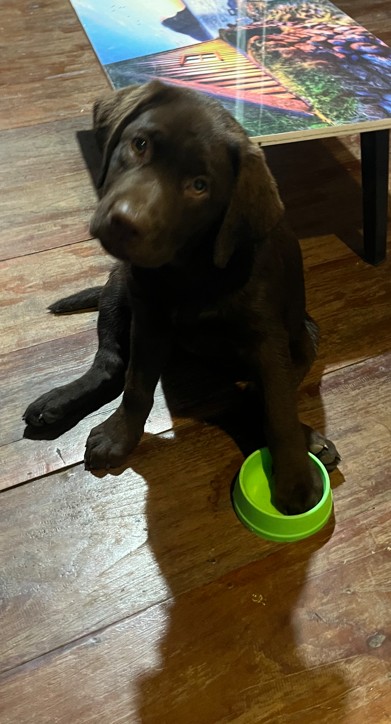
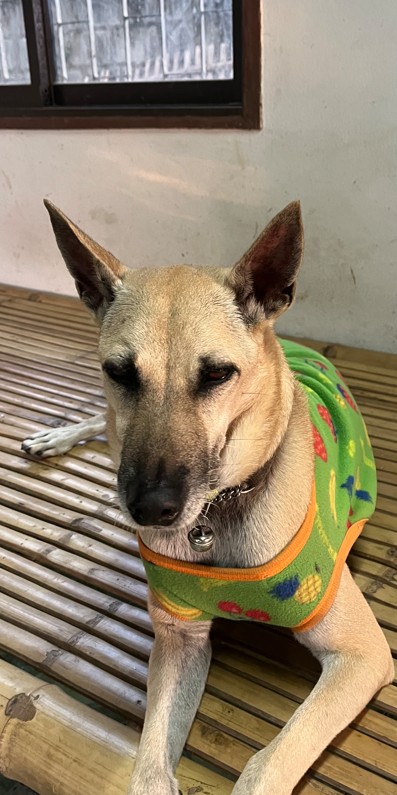
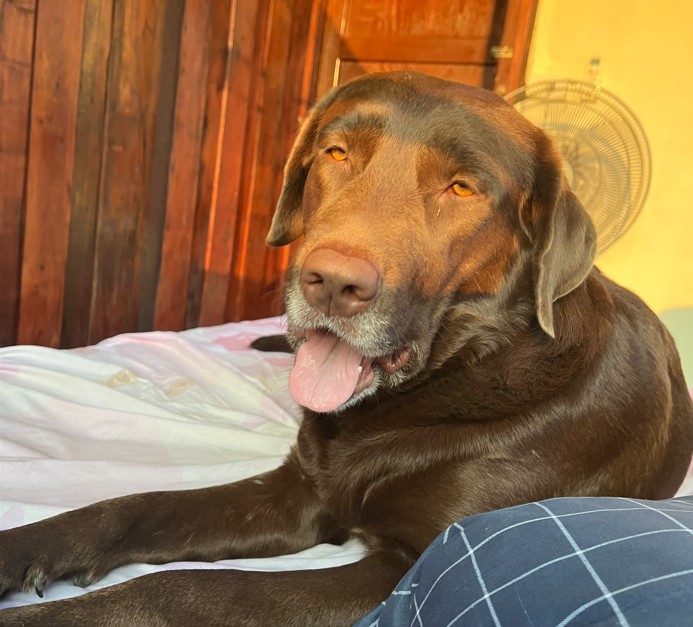
Consistency builds confidence. Predictable care forms a “safe base effect,” empowering dogs to explore and adapt without fear. Stability at home becomes the foundation for balanced behavior everywhere.
Advanced Troubleshooting: Specific Behavioral Protocols
Night-Time Anxiety and Restlessness Solutions
Night-time anxiety can destroy the entire family’s sleep quality and create a cascade of daytime behavioral issues. Understanding the root causes helps create targeted routine modifications that restore peaceful nights.
Environmental Optimization Protocol: Your dog’s sleeping environment profoundly impacts their ability to settle. Start by establishing a consistent sleep location that balances security with independence. Many anxious dogs benefit from being in the same room as their humans initially, with gradual transitions to independent sleeping if desired.
The 90-Minute Wind-Down Routine:
- 8:00 PM: Begin dimming lights throughout the house
- 8:15 PM: Final play session – gentle, not stimulating
- 8:30 PM: Calming activities (gentle brushing, massage)
- 8:45 PM: Final potty break with minimal interaction
- 9:00 PM: Settling in sleep area with calming music or white noise
- 9:15 PM: Lights out, consistent sleep cue word
- 9:30 PM: Complete settling expected
Middle-of-Night Waking Protocol: When your dog wakes anxious at night, your response sets future patterns. Keep interactions minimal and boring—no talking, minimal eye contact, business-only potty breaks if needed. Return immediately to the sleeping area with the same settling cue. Consistency here is crucial; even one night of extended comfort can reset progress.
Supplement Support Timing: If working with your vet on anxiety supplements or medications, timing matters. Most calming supplements work best given 30-60 minutes before the bedtime routine begins. Document effectiveness in your tracking sheets to optimize timing.
Demand Barking Throughout the Day
Demand barking—when your dog barks to get what they want—often escalates when routines aren’t meeting their needs predictably. This protocol addresses both the symptom and underlying cause.
The Extinction Burst Warning: When you stop responding to demand barking, expect it to get worse before it gets better. This “extinction burst” typically peaks around day 3-5. If you give in during this peak, you’ve just trained your dog to bark longer and louder. Prepare your household (and neighbors) for this temporary increase.
Proactive Need-Meeting Schedule:
- Anticipate needs before barking begins
- Set timers for regular interaction points
- Provide enrichment before typical barking times
- Rotate toys on a predictable schedule to maintain novelty
The “Quiet Earns Attention” Protocol:
- When barking begins, become completely uninteresting
- Turn away, freeze in place, no eye contact
- The instant barking stops, count to three
- If still quiet, calmly provide attention or requested item
- Gradually increase the quiet duration required
Communication Alternative Training: Teach your dog appropriate ways to request needs:
- Ring bells for potty breaks
- Bring a toy for play time
- Sit by their bowl for meals
- Go to their mat for attention
Practice these alternatives during calm moments, heavily reinforcing the desired communication method. Soon, your dog learns that quiet requests work better than demanding barks.
Destructive Behavior When Alone
Destruction during alone time often signals anxiety, boredom, or both. This protocol addresses both possibilities while building confidence in solitude.
The Gradual Alone-Time Building Schedule:
Week 1: Micro-Absences
- Step out of sight for 2-3 seconds, return calm
- Repeat 10-15 times throughout the day
- Gradually increase to 30 seconds
- Practice in different rooms
Week 2-3: Short Absences
- Build to 5-minute absences
- Add departure cues gradually (keys, shoes)
- Vary the times of practice sessions
- Always return before anxiety escalates
Week 4+: Functional Absences
- Extend to practical durations
- Add real departures (getting mail, taking trash out)
- Randomize duration within dog’s comfort zone
- Build to needed alone-time duration
The Enrichment Ladder System: Create graduated enrichment options that extend engagement:
- Level 1: Easy puzzle toy (5-10 minutes engagement)
- Level 2: Frozen Kong (15-20 minutes)
- Level 3: Hidden treats around safe space (10-15 minutes searching)
- Level 4: Calming activity post-enrichment (chew toy)
Deploy these in sequence to create an extended activity chain that covers your absence duration.
Safe Space Optimization: Whether using a crate, pen, or dog-proofed room, the space must feel like a haven, not a prison:
- Comfortable bedding with your scent
- White noise or calming music
- Appropriate temperature control
- Safe toys rotated daily
- Water access always available
Leash Reactivity: Morning Versus Evening Patterns
Leash reactivity often shows distinct patterns based on time of day, energy levels, and environmental factors. This protocol addresses temporal variations in reactive behavior.
Morning Reactivity Management: Morning walks often involve higher trigger exposure (commuters, school runs, other dogs). Your dog may also have pent-up energy from overnight, increasing reactivity potential.
Morning Protocol:
- 5-minute calm settling before departing
- Start with sniffing and mental engagement in your yard/building
- Choose quieter routes initially, building to busier ones
- Use highest-value treats (your dog hasn’t eaten yet!)
- Keep initial morning walks shorter but more frequent
- Focus on engagement with you rather than distance covered
Evening Reactivity Differences: Evening reactivity often stems from accumulated daily stress or overstimulation. Dogs may be mentally tired but physically energetic, creating a volatile combination.
Evening Adjustments:
- Decompression time before walks (15-minute calm period)
- Longer, slower-paced walks with more sniffing
- Reduced training demands – focus on calm movement
- Avoid peak dog-walking times initially (usually 5-7 PM)
- End walks 10 minutes before reactive episodes typically begin
- Follow with calming activities at home
The Distance-Timing Matrix: Track your dog’s reactive distance at different times:
- Morning threshold: _____ feet
- Afternoon threshold: _____ feet
- Evening threshold: _____ feet
Adjust your routes and timing based on these patterns, always working within your dog’s current threshold for success.
Mealtime Aggression in Multi-Pet Homes
Resource guarding around food in multi-pet households requires careful management and systematic desensitization. This protocol prioritizes safety while building positive associations.
The Separation-Distance Protocol:
Phase 1: Complete Visual Separation
- Feed pets in different rooms with doors closed
- Maintain calm energy during prep and feeding
- Allow 15 minutes for eating, then remove bowls
- Practice for 2 weeks minimum
Phase 2: Barrier Feeding
- Use baby gates for visual contact with physical separation
- Start with maximum distance possible
- Feed simultaneously to create positive parallel associations
- Continue for 2-3 weeks
Phase 3: Graduated Proximity
- Remove barriers but maintain distance (opposite room sides)
- Gradually decrease distance by 1 foot weekly
- Monitor body language constantly
- Retreat to previous phase if tension appears
The Positive Association Protocol:
- Special treats appear only when other pets eat nearby
- Practice “taking turns” with treats during non-meal times
- Reward calm behavior around other pets’ bowls (when empty)
- Create group training sessions with individual rewards
Management Strategies:
- Always supervise mealtimes
- Feed structured dogs first (reduces anticipation anxiety)
- Use slow-feeder bowls to equalize eating speeds
- Maintain individual food puzzles as backup plan
- Never punish growling – it’s important communication

The Routine Disruption Recovery Plan
Holiday and Vacation Management
The excitement and disruption of holidays can undo months of routine progress if not properly managed. These protocols help maintain stability during festive periods and travel.
Pre-Trip Routine Adjustments
Starting two weeks before travel, begin gradual adjustments that prepare your dog for upcoming changes while maintaining core stability.
The Two-Week Preparation Protocol:
- Week 2 before: Introduce travel items (suitcases, carriers) into daily environment
- Week 2 before: Practice slightly varied meal times (within 30-minute window)
- Week 1 before: Short practice separations if using boarding
- Week 1 before: Gradually adjust exercise times to match travel schedule
- Days before: Pack familiar items with your scent for comfort
- Day before: Maintain completely normal routine to minimize anxiety
Travel Day Routine Modifications:
- Early morning: Extended exercise to promote calm
- 2 hours before: Last normal meal (prevents car sickness)
- 1 hour before: Calming activities, not exciting play
- Departure: Matter-of-fact energy, minimal fuss
- During travel: Maintain regular potty break schedule
- Arrival: Immediate routine elements in new environment
Maintaining Routine While Traveling
Creating familiarity in unfamiliar places helps your dog adapt quickly to new environments while preserving behavioral stability.
The Portable Routine Kit:
- Familiar bedding with home scents
- Regular food and water bowls
- Usual toys and enrichment items
- White noise machine or calming music
- Consistent commands and cues
- Normal treats and rewards
First 24 Hours in New Location:
- Immediate boundary walk to establish new territory
- Set up “home base” with familiar items
- Maintain exact meal times from home schedule
- Provide extra enrichment to offset environmental stress
- Keep exercise duration consistent, route can vary
- Establish sleeping arrangement immediately
Daily Vacation Routine Template:
- Morning: Same wake time, immediate potty routine
- Morning: Familiar breakfast ritual in consistent spot
- Mid-morning: Exploration/exercise adapted to location
- Afternoon: Rest period (crucial in stimulating environments)
- Evening: Normal dinner time and routine
- Night: Extended wind-down to process new experiences
Boarding and Pet-Sitter Instructions
Providing detailed instructions ensures your dog’s routine continues in your absence, minimizing stress and preventing behavioral regression.
The Complete Care Template:
Daily Schedule:
- 6:30 AM: Wake and immediate potty
- 6:45 AM: Breakfast (specific amounts and method)
- 7:15 AM: Morning walk (usual duration and energy level)
- 12:00 PM: Midday break (potty and brief interaction)
- 5:00 PM: Evening meal
- 6:00 PM: Main exercise/play session
- 8:30 PM: Final potty
- 9:00 PM: Bedtime routine
Behavioral Management Notes:
- Triggers and avoidance strategies
- Calming techniques that work
- Signs of stress to watch for
- Emergency protocols if anxiety escalates
- Preferred reinforcement strategies
- Current training commands and expectations
Emergency Escalation Plan:
- First signs of distress: [Specific calming techniques]
- If continued anxiety: [Environmental modifications]
- Moderate distress: [Contact owner for virtual support]
- Severe distress: [Veterinary contact and protocol]
Post-Vacation Re-establishment
Returning home requires deliberate routine re-establishment to prevent post-vacation behavioral regression.
The Three-Day Reset Protocol:
Day 1 – Gentle Return:
- Allow decompression time before full routine
- Shortened exercise sessions
- Extra rest periods
- Familiar, comforting activities
- No new challenges or training
Day 2 – Routine Reinforcement:
- Return to exact pre-vacation schedule
- Reintroduce all routine elements
- Monitor for stress signals
- Provide extra affection during transitions
- Use highest-value rewards for compliance
Day 3 – Full Re-engagement:
- Complete normal routine
- Resume training expectations
- Return to standard reinforcement
- Document any persistent changes
- Adjust if needed for optimal stability
Life Transition Protocols
Major life changes require thoughtful routine adaptations that maintain stability while accommodating new realities.
New Baby Arrival Preparations
Preparing your dog for a baby requires months of gradual adjustments, not days. This protocol begins ideally 3-4 months before arrival.
Phase 1 – Early Pregnancy Adjustments (Months 1-3 before):
- Gradually shift dog care responsibilities if needed
- Introduce baby sounds at low volume during calm times
- Practice impulse control around toys and small items
- Establish go-to-mat behavior for future nursing times
- Adjust walking schedule to anticipated baby routine
Phase 2 – Mid-Preparation (Months 2-1 before):
- Set up nursery with controlled dog access
- Practice calm behavior around baby equipment
- Introduce baby dolls for gentle interaction training
- Establish new exercise routine if primary caregiver changing
- Create “baby time” where dog entertains themselves
Phase 3 – Final Preparations (Final month):
- Rehearse complete anticipated daily routine
- Practice reduced attention without anxiety
- Solidify all management behaviors
- Arrange support for immediate postpartum period
- Create positive associations with baby scents
Post-Arrival Integration:
- Maintain dog’s routine religiously despite chaos
- Pair baby activities with dog rewards
- Preserve some one-on-one dog time daily
- Monitor stress signals carefully
- Adjust gradually rather than drastically
Moving House Adaptation Strategy
Moving disrupts every aspect of your dog’s routine simultaneously. This protocol minimizes the impact through strategic planning.
Pre-Move Phase (2-4 weeks before):
- Maintain routine despite packing chaos
- Create safe space away from packing activity
- Increase exercise to offset stress
- Practice car rides if moving long distance
- Visit new neighborhood if possible
Moving Day Management:
- Early morning: Extended exercise and enrichment
- During move: Secure care away from chaos
- Consider professional pet transport for long distance
- Maintain meal schedule regardless of chaos
- Prioritize dog’s comfort over efficiency
New Home Establishment (First week):
- Day 1: Explore immediate area only
- Day 2-3: Gradually expand exploration zone
- Day 4-7: Begin establishing new walking routes
- Week 2: Full routine in new environment
- Week 3+: Fine-tune based on new factors
Critical Success Factors:
- Keep familiar items unwashed for comfort
- Establish sleeping area immediately
- Maintain exact meal times from previous home
- Increase enrichment during adjustment period
- Be patient with temporary regression
New Pet Integration Schedules
Adding a new pet requires careful orchestration to prevent disrupting your existing dog’s stability while establishing routines for the newcomer.
Pre-Arrival Preparation:
- Gradually introduce new pet’s scent via blankets
- Practice sharing attention with stuffed animals
- Reinforce calm behavior around novel items
- Establish separate spaces before arrival
- Stock supplies to avoid early disruptions
The Parallel Routine System (Weeks 1-2):
- Maintain existing dog’s exact routine
- Create separate but parallel routine for new pet
- Feed in separate rooms simultaneously
- Exercise separately but at same times
- Gradual visual exposure during calm periods
Integration Milestones:
- Week 1-2: Scent and sound familiarity
- Week 3-4: Brief, controlled visual contact
- Week 5-6: Parallel activities with distance
- Week 7-8: Supervised same-room time
- Month 3: Integrated routine elements
- Month 6: Full household harmony
Emergency Preparedness Protocols
Emergencies can’t always be predicted, but having protocols in place minimizes routine disruption during crises.
Natural Disaster Contingency Planning
Creating emergency routines before disasters strike helps maintain stability during chaotic times.
The Emergency Routine Kit:
- 3-day supply of regular food
- Portable water and bowls
- Familiar blanket in waterproof bag
- Copies of medical records
- Current photos for identification
- Comfort items and toys
- Calming supplements if used
- Detailed routine instructions for helpers
Evacuation Routine Protocol:
- Practice emergency exits monthly
- Train solid recall for emergency scenarios
- Establish carrier/crate comfort preemptively
- Identify pet-friendly evacuation locations
- Create buddy system with neighbors
- Document routine for emergency caregivers
Shelter-in-Place Adaptations:
- Indoor exercise alternatives planned
- Extended enrichment activities prepared
- Potty area alternatives identified
- Stress management protocols ready
- Entertainment supplies stockpiled
- Medication supplies maintained
Medical Emergency Adaptations
When you or your dog faces medical emergencies, routine modifications help maintain stability during recovery.
Owner Hospitalization Protocol:
- Designated emergency caregiver with routine knowledge
- Written routine accessible to multiple people
- Gradual transition if hospitalization planned
- Video calls during routine times if possible
- Maintain exact schedule through caregivers
- Post-return gradual resumption plan
Dog Medical Recovery Routines:
- Adjust exercise type, not timing
- Mental enrichment replaces physical activity
- Maintain all possible routine elements
- Add comfort measures at routine times
- Monitor stress indicators closely
- Gradually return to full routine as cleared
Breed-Specific Routine Variations
Working Breed Specifications
Working breeds like Border Collies, Australian Shepherds, German Shepherds, and Belgian Malinois have intense mental and physical needs that standard routines may not address. These dogs were bred for jobs, and without appropriate outlets, they create their own—often destructive—activities.
Border Collies and Australian Shepherds: The Mental Athletes
These herding breeds need their minds engaged as much as their bodies. A tired Border Collie without mental stimulation is still a problem waiting to happen.
The Herding Brain Schedule:
Morning Mind Games (6:30-7:30 AM):
- Wake with immediate puzzle feeding (not a bowl!)
- 15-minute training session with new skill focus
- 30-minute exercise combining physical and mental challenges
- Cool-down with scent work or finding hidden toys
Midday Mental Break (12:00-12:30 PM):
- Interactive toy or puzzle reset
- Brief training refresher (5 minutes)
- Calm settling practice (crucial for these breeds)
Evening Job Simulation (5:00-6:30 PM):
- “Herding” games with balls or toys
- Agility or obstacle work
- Advanced training sequences
- Problem-solving challenges
The Weekly Enrichment Rotation:
- Monday: New trick training
- Tuesday: Agility or obstacle courses
- Wednesday: Scent work and tracking
- Thursday: Advanced obedience chains
- Friday: Interactive play and sports
- Weekend: Novel experiences and environments
These breeds particularly benefit from having a “job” throughout the day. Consider teaching them to bring you items, sort toys by type, or perform household “helps” that engage their working heritage.
German Shepherds and Belgian Malinois: The Protection Athletes
These breeds combine high intelligence with natural guarding instincts, requiring routines that channel both appropriately.
The Structured Working Day:
Morning Protocol (6:00-8:00 AM):
- Immediate boundary patrol (structured walk checking territory)
- Obedience drills with distraction training
- Protection sports foundation work (if appropriate)
- Impulse control exercises around triggers
Working Hours Management:
- Scheduled “watch” times from designated spots
- Regular position changes to prevent fixation
- Interruption training for alert barking
- Calm-on-command practice
Evening Decompression (5:00-7:00 PM):
- High-intensity exercise (running, fetch, swimming)
- Followed by mandatory calm period
- Social exposure in controlled settings
- Relationship-building activities
Critical Routine Elements:
- Clear on-duty versus off-duty times
- Regular socialization maintenance
- Impulse control integrated throughout day
- Mental challenges preventing boredom-based guarding
- Structured outlets for natural protective instincts
Companion Breed Adaptations
Companion breeds like Cavalier King Charles Spaniels, Havanese, and similar dogs were bred for human companionship, requiring routines that fulfill their social needs.
Social Butterfly Schedules
These breeds often suffer when left alone for standard working hours, requiring creative routine solutions.
The Companionship-Centered Day:
Morning Connection (7:00-8:30 AM):
- Wake with immediate cuddle time (yes, it matters!)
- Breakfast together – they eat while you prepare yours
- Gentle exercise with focus on interaction
- Grooming or massage session
Managed Separation:
- Never exceed 4 hours alone if possible
- Midday visitor or daycare essential
- Comfort items with owner’s scent
- Background noise or TV for company
- Gradual alone-time training crucial
Evening Togetherness (5:00-9:00 PM):
- Reunion ritual with calm affection
- Lap time during dinner preparation
- Social walk focusing on greetings with people
- Family time with dog as central participant
- Bedtime routine maintaining close proximity
Social Enrichment Requirements:
- Daily positive interactions with various people
- Regular playdates with gentle dogs
- Accompaniment on errands when possible
- Structured separation practice to prevent anxiety
- Multiple short interactions versus one long session
These breeds thrive on predictable social contact. Their routines should maximize human interaction while building independence gradually to prevent separation anxiety.
Brachycephalic Breed Considerations: Temperature-Sensitive Scheduling
French Bulldogs, Pugs, and other flat-faced breeds require routines that respect their physical limitations while meeting their social and mental needs.
The Temperature-Adapted Schedule:
Summer Routine Adjustments:
- 5:30 AM: Early morning walk (before heat)
- 6:00 AM: Breakfast in cool environment
- 7:00 AM-5:00 PM: Indoor enrichment only
- 5:00 PM: Brief potty break only
- 8:00 PM: Evening walk as temperature drops
- 9:00 PM: Final outdoor time
Winter Routine Modifications:
- 7:00 AM: Later start to avoid extreme cold
- Indoor warm-up exercises before outdoor time
- Shortened but more frequent outdoor breaks
- Midday walks during warmest period
- Extra indoor enrichment activities
- Cozy evening routines with warming elements
Year-Round Considerations:
- Exercise intensity limited to prevent overheating
- Mental enrichment prioritized over physical exercise
- Multiple short activities versus extended sessions
- Climate-controlled environment essential
- Breathing monitoring during all activities
- Recovery time built into schedule
Critical Safety Elements:
- Never exercise in temperatures above 75°F
- Always carry water and cooling supplies
- Monitor breathing patterns constantly
- Avoid exercise immediately after meals
- Build rest periods between activities
- Keep emergency protocols readily available
Independent Breed Considerations
Independent breeds like Shiba Inus, Chow Chows, and Akitas require routines that respect their autonomous nature while maintaining necessary structure.
The Respect-Based Routine Structure
These breeds respond poorly to force or repetitive demands, requiring routines built on mutual respect and clear boundaries.
The Independent Dog’s Day:
Morning Negotiations (6:30-8:00 AM):
- Consistent wake time but allowing wake-up pace
- Invitation-based interaction (not demanding)
- Choice-based training with high-value rewards
- Independent exploration time built in
- Respectful grooming windows
Autonomous Activity Periods:
- Designated “their time” without interaction
- Environmental enrichment they control
- Puzzle feeders allowing independent problem-solving
- Secure outdoor access for self-directed activity
- Observation without interference
Evening Partnership (5:00-9:00 PM):
- Cooperative walking (not forced heeling)
- Training sessions kept short and interesting
- Parallel activities respecting space
- Earned affection on their terms
- Predictable alone time before bed
Motivation Strategies:
- Variety within routine structure
- High-value, rotating rewards
- Short, successful training sessions
- Environmental management over confrontation
- Respect for their communication signals
- Building trust through consistency
These breeds particularly benefit from routines that feel like their choice. Creating predictable opportunities for natural behaviors while maintaining boundaries helps prevent conflict and builds cooperation.
Scent Hound Specializations
Beagles, Bloodhounds, and other scent hounds have unique needs centered around their extraordinary noses, requiring routines that satisfy this drive.
The Nose-Forward Schedule:
Morning Scent Adventure (6:00-7:30 AM):
- Immediate access to interesting smells
- Sniff-walk with minimal pulling pressure
- Hidden breakfast portions for searching
- Tracking games in yard or safe area
- Scent puzzle completion
Integrated Scent Work:
- Meals always involve searching component
- Regular “find it” games throughout day
- Rotating scent articles for interest
- Indoor tracking during bad weather
- Scent discrimination training
Evening Nose Time (5:00-7:00 PM):
- Longer sniff-focused walk
- Different route for novel scents
- Social sniffing opportunities with other dogs
- Scent trailing exercises
- Wind-down with calming scent activities
Managing Scent Distraction:
- Designated sniffing zones on walks
- “Free sniff” versus “let’s go” commands
- Scent work as reward for other behaviors
- Building focus despite olfactory distractions
- Using scent drive for recall training
Environmental Enrichment:
- Scent gardens with safe plants
- Rotating outdoor scent stations
- Novel items for investigation
- Controlled wildlife scent exposure
- Seasonal scent variations celebrated
For scent hounds, the routine isn’t just about physical exercise—it’s about providing appropriate outlets for their primary sense. Ignoring this need leads to destructive sniffing, excessive baying, and escape attempts to follow interesting scents. 🐾
Measuring Success: Behavioral Milestones and Adjustments
The 30-Day Transformation Markers
Understanding what progress looks like helps maintain motivation during the challenging early weeks of routine implementation. These concrete milestones indicate your routine is working.
Week 1 Observable Changes:
- Anticipation of routine elements beginning
- Reduced pacing during transition times
- Improved appetite regulation
- Slight decrease in attention-seeking behaviors
- Beginning of internal clock alignment
Week 2 Behavioral Shifts:
- Automatic settling at routine rest times
- Decreased resistance to routine elements
- Improved sleep consolidation
- Reduced reactivity to routine preparations
- Emerging calmness during previously anxious periods
Week 3 Stability Indicators:
- Self-initiated routine behaviors (going to bed, waiting by door)
- Marked reduction in anxiety symptoms
- Improved training responsiveness
- Better frustration tolerance
- Increased independence within structure
Week 4 Transformation Evidence:
- Complete routine anticipation without anxiety
- Significant behavioral improvement in problem areas
- Enhanced bond and communication with owner
- Visible contentment and confidence
- Resilience to minor routine variations
Fine-Tuning Based on Individual Response
Your dog’s response to routine implementation provides valuable feedback for optimization. Learning to read and respond to these signals ensures continued progress.
Signs Your Routine Needs Adjustment:
Under-Stimulation Indicators:
- Destructive behavior despite routine
- Excessive sleeping or lethargy
- Weight gain without diet changes
- Attention-seeking escalation
- Creating their own “jobs” (often problematic)
Over-Stimulation Signals:
- Inability to settle during rest periods
- Hypervigilance or reactivity increase
- Disrupted sleep patterns
- Decreased appetite
- Stress signals during routine activities
Making Strategic Adjustments:
- Change one element at a time
- Allow 3-5 days for adaptation
- Document changes and responses
- Return to previous version if regression occurs
- Consider individual energy fluctuations
- Respect seasonal variations in needs
The Monthly Routine Review:
- Assess overall behavioral progress
- Identify persistent challenges
- Evaluate routine sustainability
- Adjust for life changes
- Celebrate successes achieved
- Plan next month’s focus areas
Long-Term Maintenance Strategies
Once your routine is established and working, maintaining its effectiveness requires ongoing attention and periodic refreshing.
Preventing Routine Staleness:
- Rotate enrichment activities weekly
- Introduce novel experiences monthly
- Vary exercise locations regularly
- Update training challenges quarterly
- Refresh toys and puzzles seasonally
- Add surprise elements within structure
Adapting to Life Stage Changes:
- Gradual adjustments for aging
- Energy level modifications
- Health-related accommodations
- Cognitive support additions
- Comfort measure increases
- Medical need integrations
Building Routine Resilience:
- Practice planned disruptions
- Create backup routine options
- Develop support networks
- Maintain flexibility within structure
- Build dog’s confidence in changes
- Prepare for emergencies proactively
The beauty of a well-established routine is that it becomes self-reinforcing. Your dog’s improved behavior makes routine maintenance easier, creating a positive cycle of stability and well-being that enriches both your lives. 🧡
Professional Support: When to Seek Help
Recognizing When You Need Expert Guidance
While many behavioral issues resolve with consistent routine implementation, some situations benefit from professional intervention. Knowing when to seek help ensures you don’t struggle unnecessarily or inadvertently worsen problems.
Immediate Professional Consultation Needed:
- Aggression toward humans or animals
- Severe separation anxiety with self-injury
- Compulsive behaviors affecting quality of life
- Sudden dramatic behavior changes
- Fear responses escalating despite routine
- Resource guarding with bite history
Beneficial Professional Support Situations:
- Plateau in progress after consistent effort
- Multiple dogs with conflicting needs
- Complex household dynamics
- Significant life transitions pending
- Medical issues affecting behavior
- Owner stress affecting implementation
Types of Professional Support
Understanding different professional roles helps you choose appropriate support for your specific situation.
Certified Dog Behavior Consultants: These professionals specialize in behavior modification and can:
- Assess your current routine’s effectiveness
- Identify missing elements or problems
- Create customized behavior plans
- Provide implementation support
- Offer ongoing guidance and adjustments
- Address complex behavioral issues
Veterinary Behaviorists: When medical factors might contribute to behavioral issues:
- Rule out medical causes for behavior
- Prescribe appropriate medications if needed
- Coordinate medical and behavioral treatment
- Monitor medication effectiveness
- Adjust protocols based on response
- Provide specialized expertise
Professional Dog Trainers: For routine implementation support and skill building:
- Teach specific behaviors needed for routine
- Provide hands-on training guidance
- Help with timing and technique
- Offer group class structure
- Support consistency across family members
- Build owner confidence and skills
Integrating Professional Guidance with Routine
Professional support works best when integrated seamlessly with your established routine rather than replacing it.
Maximizing Professional Support:
- Share your detailed routine documentation
- Be honest about implementation challenges
- Follow homework assignments consistently
- Integrate recommendations gradually
- Maintain routine structure during treatment
- Track progress systematically
Common Professional Recommendations:
- Specific routine timing adjustments
- Additional management strategies
- Behavior modification protocols
- Environmental modifications
- Supplementation or medication timing
- Family member role clarifications
Remember, seeking professional help isn’t failure—it’s investing in your dog’s well-being and your relationship’s success. The right professional can accelerate progress and prevent unnecessary suffering for both you and your dog.
The Routine Revolution: Your Next Steps
Starting Your Routine Journey Today
You now have comprehensive knowledge about building routines that stabilize dog behavior. The question isn’t whether to start, but how to begin in a way that ensures success.
Your First 24 Hours:
- Complete the Routine Building Worksheet
- Choose your non-negotiable routine elements
- Set wake and sleep times
- Plan tomorrow’s basic schedule
- Prepare needed supplies
- Brief family members on the plan
- Commit to one week trial
Your First Week Focus:
- Consistency over perfection
- Document everything
- Stay patient with resistance
- Celebrate small victories
- Adjust only if absolutely necessary
- Build momentum gradually
Your First Month Goals:
- Establish core routine elements
- Document behavioral changes
- Identify what works best
- Build family consistency
- Create tracking habits
- Plan sustainable long-term structure
Building Your Support Network
Success with routine implementation improves dramatically with proper support systems in place.
Creating Your Routine Team:
- Family members with assigned roles
- Backup caregivers who understand the routine
- Professional support identified if needed
- Online community for encouragement
- Veterinary team aware of behavioral goals
- Emergency contacts prepared
Communication Strategies:
- Written routine posted visibly
- Family meetings about consistency
- Progress updates to encourage compliance
- Problem-solving sessions for challenges
- Celebration of milestones together
- Adjustment discussions when needed
The Lifetime Impact
The routine you establish today shapes your dog’s entire future. This isn’t just about solving current problems—it’s about preventing future ones and creating a framework for lifelong well-being.
What You’re Really Building:
- A foundation for behavioral health
- Stress resilience for life challenges
- Communication systems with your dog
- Predictable support through changes
- Quality of life improvements
- Deeper mutual understanding
The Ripple Effects: Your dog’s improved behavior and stability affect everyone in their life:
- Calmer household atmosphere
- Easier veterinary visits
- Better socialization opportunities
- Reduced family stress
- Enhanced bonding experiences
- Inspiration for others struggling
Building a daily routine that stabilizes your dog’s behavior is one of the most powerful gifts you can give your furry friend. It’s not about rigid scheduling or sacrificing spontaneity—it’s about creating a predictable framework within which both you and your dog can thrive.
Remember, every dog is unique, and the perfect routine for your companion will reflect their individual needs, your lifestyle, and the special dynamics of your relationship. Start small, be patient with the process, and celebrate the incremental improvements you observe. Those moments when your dog automatically settles at their usual evening time, or when they calmly wait for their morning walk without anxiety—these are victories worth acknowledging.
The science is clear: predictability reduces stress, strengthens bonds, and supports both behavioral and physical health in our canine companions. But beyond the research, there’s something profoundly satisfying about creating a life rhythm that nurtures your dog’s well-being. You’re not just managing behavior; you’re providing the security and structure that allows your dog’s true personality to flourish.
As you embark on this journey of routine-building, remember that perfection isn’t the goal—consistency is. Your dog doesn’t need a minute-by-minute schedule; they need the reliable presence of someone who understands and meets their needs predictably. In providing this, you’re giving your dog the foundation for a balanced, happy life.
Is building a comprehensive routine right for you and your dog? If you’re dealing with behavioral challenges, struggling with anxiety (yours or your dog’s), or simply wanting to optimize your life together, the answer is almost certainly yes. The investment of time and effort in establishing routines pays dividends in reduced stress, improved behavior, and a deeper, more satisfying relationship with your four-legged family member.
Take that first step today. Choose one simple routine element—perhaps a consistent morning wake time or regular evening settling period—and commit to it for just one week. Watch how your dog responds, notice the subtle changes in their demeanor, and build from there. Your future self (and your calmer, happier dog) will thank you for starting this transformative journey today. 🧡

